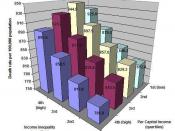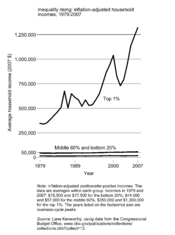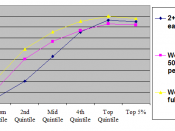Income inequality in the United States remained relatively stable for a period of nearly forty years. Beginning in the 1970's, however, this period of stability ended, as the first signs of widening income inequality became apparent. Over the course of the 1970's and 1980's, an increasingly clear trend toward greater income inequality emerged. By the end of the 1980's, the top 20 percent of workers were receiving the largest share of income ever recorded by government figures, and the bottom three fifths were receiving the lowest shares ever recorded. This trend has continued into the 1990's and currently shows no signs of decline. When the indicators of growing inequality were first observed in the 1970's, some researchers argued that the effects were merely temporary artifacts of short-term labor market disturbances. By the end of the 1980's, however, a long-term trend towards increasing inequality had clearly emerged, pointing instead to inflexible changes in the occupational structure itself.
The new occupational structure appeared to be one with an increase of well-paid technical, scientific, and professional jobs at the top, a "sliding" middle class, and a growing poorly-paid service and retail jobs at the bottom. Several important labor-force changes appeared to be contributing to the shifting occupational structure. As occupational reconstructing and growing income inequality became increasingly evident, a heated debated as to the causes and magnitude of these changes arose. Two dominant bodies of thought emerged around the issue: the "job-skill mismatch" thesis and the "polarization" thesis. Mismatch theorists argue that there is an increasing distance between the high skill requirements of post-industrial jobs and the inadequate training and mediocre qualifications of workers. They see the post-industrial economy leaving behind unskilled workers, especially women and minorities. For the mismatch theorist, the trend toward greater inequality is temporary and will dissipate once the...


